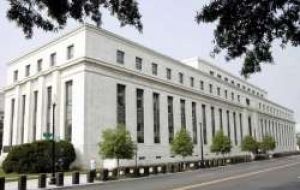MercoPress. South Atlantic News Agency
With zero rate, further cuts not an option for the US Fed

The US Federal Reserve has slashed its key interest rate from 1% to a range of between zero and 0.25% as it battles the country's recession. In its statement, the Federal Reserve warned that “the outlook for economic activity has weakened further”.
It predicted that rates would stay at the current exceptionally low levels "for some time". It added that it was considering ways it could spend money on supporting the economy and credit markets. The Federal Reserve is already injecting billions of dollars into the banking system as well as buying debt based on home loans. Analysts were looking for indications of what policymakers plan to do now that they cannot cut interest rates any further. The Federal Reserve stressed that it was already planning to buy large quantities of additional debt based on mortgages and is considering whether it would be a good idea to buy long-term US government bonds. "The focus of the Committee's policy going forward will be to support the functioning of financial markets and stimulate the economy through open market operations and other measures that sustain the size of the Federal Reserve's balance sheet at a high level. As previously announced, over the next few quarters the Federal Reserve will purchase large quantities of agency debt and mortgage-backed securities to provide support to the mortgage and housing markets, and it stands ready to expand its purchases of agency debt and mortgage-backed securities as conditions warrant". "The Committee is also evaluating the potential benefits of purchasing longer-term Treasury securities. Early next year, the Federal Reserve will also implement the Term Asset-Backed Securities Loan Facility to facilitate the extension of credit to households and small businesses. The US rate has been cut drastically by the Federal Reserve from the 5.25% where it stood in September 2007. It is the first time that the central bank's key rate, the target rate for overnight federal funds, has been so low since records began in 1954. The decision received a tepid reception from the stock market, with the Dow Jones Industrial Average rising from 8,684 just before the decision to 8,740 about half an hour after it, which is a rise of just 56 points. "You've seen the dollar weaken because it was a larger than expected cut - the dollar is falling against all major currencies," said Matt Esteve at Tempus Consulting in Washington. "On one side, we effectively have a zero interest rate in the US - on the other side, the Fed has sent a sign that they are ready to use all tools to help the US economy out of recession." Earlier in the day, official data from the Labour Department confirmed that the threat of inflation is receding, as consumer prices dropped a record 1.7% in November following a 1% decline in October. October and November's falls were the two biggest since monthly data first started being recorded in 1947. And the annual rate of inflation was just 1.1% in November, down from 3.7% the previous month. Meanwhile US industrial production fell by a smaller-than-expected 0.6% in November, official figures have shown. The fall was led by carmakers as sales dropped amid the severe downturn. However, the decline was not as bad as the 0.8% fall predicted by analysts. Industrial production had dropped 5.5% compared with November 2007, the Federal Reserve said. The figures also showed that output had risen by 1.5% during October, up from an earlier estimate of 1.3%. Manufacturing output declined 1.4% in November after a 0.6% rise in October, while November's output at US mines, including oil drilling, was up 2.5%.




Top Comments
Disclaimer & comment rulesCommenting for this story is now closed.
If you have a Facebook account, become a fan and comment on our Facebook Page!